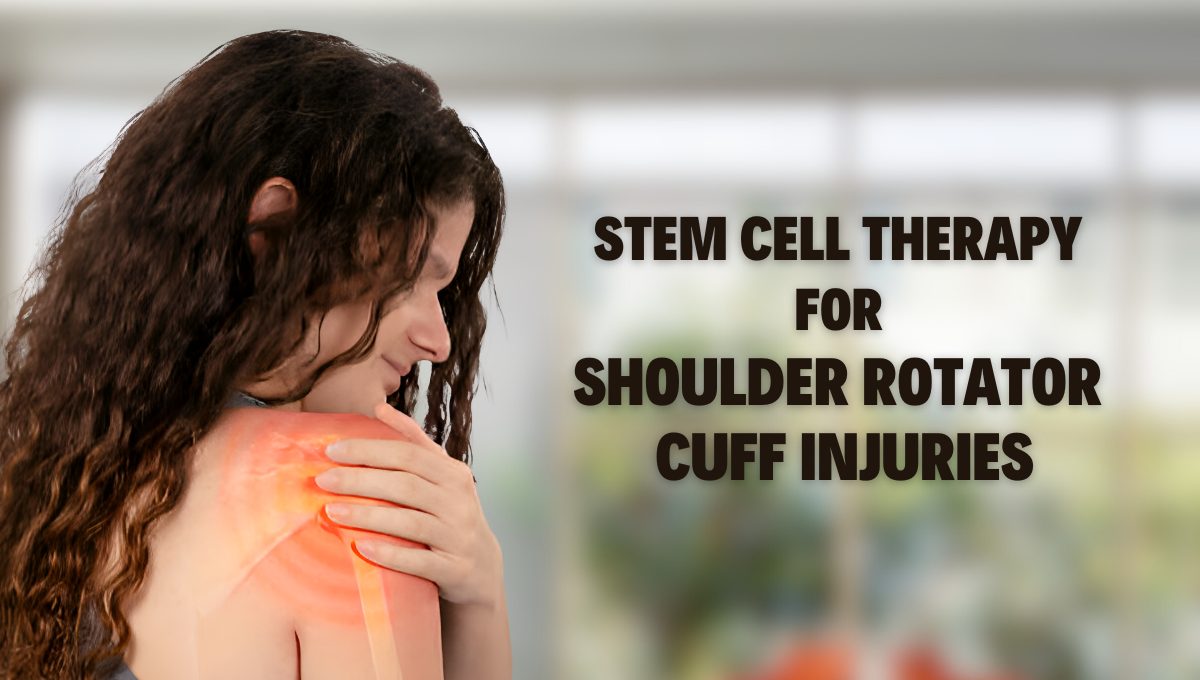- Home
- About Us
- Book Appointment
- Treatments
- Alzheimer’s Disease
- Anti-Aging
- Autism
- Autoimmune Disorders
- Back Pain
- COPD
- Crohns Disease And Ulcerative Colitis
- Erectile dysfunction and Penis enlargement
- Fibromyalgia
- Hip Pain
- Knee Pain
- Lupus
- Lyme Disease
- Multiple Sclerosis
- Muscular dystrophy
- Parkinsons Disease
- Peripheral And Diabetic Neuropathy
- Post Cancer Treatments
- Post Stroke Recovery
- Psoriasis
- Rheumatoid Arthritis
- Shoulder Pain
- Join The Club
- Aesthetics
- Blog
- Contact Us
1 out of 3 individuals above 60 years suffer from glenohumeral osteoarthritis or shoulder arthritis.
26 percent of adults above 65 years are suffering from glenohumeral osteoarthritis. This condition mostly affects the elderly.
Glenohumeral osteoarthritis is the degeneration of cartilage in the shoulder joint. This long-term disease negatively impacts the shoulder joint. Symptoms of the disease include pain, immobility, and stiffness.
Several traditional treatment methods can provide relief from the excruciating shoulder pain. Shoulder rest, application of heat packs, pain medications, and physical therapy are conventional treatment options for this condition.
Stem cell therapy is the pinnacle of regenerative medicine for osteoarthritis and orthopedic conditions.
Let’s discuss the innovative treatment methods of stem cell therapy for shoulder pain.
Overview of Glenohumeral Osteoarthritis
The glenohumeral is the primary shoulder ball-and-socket joint. This joint facilitates the free movement of the arms. The synovial fluid helps to stabilize the rotator cuff muscles for better movement. Moreover, it allows several types of motion of the arms including elevation, flexion, extension, and internal and external rotation.
Shoulder joint cartilage breakdown causes glenohumeral osteoarthritis. It exposes the ball and socket joint. This causes friction between the bones and the joint and causes bone spurs. The bone-to-joint friction limits shoulder-related activities.
Causes
The top reasons why glenohumeral osteoarthritis develops include –
- Trauma – Dislocation, fractures, or torn muscles are some types of shoulder injuries that can develop osteoarthritis.
- Infection – Joint-related infections with negative impacts.
- Genetics – People with abnormal genes are more likely to pass down such a condition to their predecessors.
- Inflammation and Aging – Inflammatory conditions such as rheumatoid arthritis or normal signs of aging induce the breakdown of the glenohumeral joint.
- Other factors – Obesity and sports such as javelin and discuss increase injury risks to the shoulder.
Impact on Life
Pain from shoulder arthritis degrades the quality of life and restricts multiple activities. Problems indicating glenohumeral osteoarthritis are –
- Severe pain that causes discomfort and sleeping problems.
- Limited motion of the arm.
- Crepitus or clicking and snapping sounds of the shoulder due to movement.
- Depression and anxiety due to constant pain in the shoulder.
- Risks related to job performance due to limited shoulder abilities.
Conventional Treatment Limitations
Shoulder pain traditional treatment limitations highlight –
- Temporary pain relief with corticosteroid injections.
- Chances of kidney injuries or digestive ulcers with non-steroidal anti-inflammatory drugs.
- Little or no proof of improvement with dietary supplements.
- Adverse effects of opioid medications.
Stem Cell Therapy Insights for Treating Glenohumeral Osteoarthritis
Stem cell therapy is a holistic treatment method for healing injuries and diseases. This regenerative medicine promotes self-healing.
Types of Stem Cells Used for Treatment
Different types of stem cells are categorized as multipotent, pluripotent, and totipotent. The most noted types of stem cells are –
- Mesenchymal stem cells – MSCs are found in the adipose layers and human umbilical cord tissues (Wharton’s Jelly).
- Embryonic stem cells – Human embryo-derived stem cells that can transform into any type of cells.
- Hematopoietic stem cells – Adult stem cells with the ability to convert into red blood cells, white blood cells, and platelets.
- Induced pluripotent stem cells – A manually reprogrammed adult stem cell to promote cell differentiation.
Stem cells alleviate shoulder pain from different injuries and conditions such as –
- Bursitis – Inflammation of the shoulder joints due to the synovial fluid in the sacs.
- Myositis – Weakening of the shoulder muscles due to inflammation from this autoimmune disease.
- Rotator cuff injuries – Rotator cuff tears, tendonitis, and rotator cuff bursitis.
- Frozen shoulder – A painful sensation in the shoulder and neck that restricts movement.
- Parsonage-Turner syndrome – Severe shoulder pain due to a rare neurological disorder.
Read Also: How To Manage Shoulder Rotator Cuff Injuries with Stem Cell Therapy?
Role of Wharton’s Jelly-Derived MSCs for Shoulder Osteoarthritis Treatment
Stem cell therapy releases trophic factors. This reduces inflammation and accelerates cartilage regeneration. MSC therapy for glenohumeral joint osteoarthritis helps through –
- Tissue Regeneration – Transformation into glenohumeral cartilage cells to promote shoulder joint recovery.
- Inflammation Restriction – MSCs release growth factors such as cytokines and chemokines to enhance joint functions and alleviate shoulder pain by reducing inflammation.
- Long-Term Healing – Promotes the formation of blood vessels in areas of injury or disease.
Stem Cell Therapy for Shoulder Arthritis Clinical Reports
Several patients choose stem cell therapy to treat different orthopedic conditions. In this section, we will explore the results of clinical trials and case studies of patients who are successfully treated with stem cells for their reduced shoulder joint abilities.
Clinical Trials
Multiple clinical studies on patients suffering from shoulder pain indicate –
- MSCs can transform into chondrocytes or cartilage-forming cells.
- Regulate the immune system.
- Regenerate damaged cartilage in the shoulder joint.
- Prevents apoptosis or cell death.
- Prevents fibrosis.
- Improves blood supply.
Case Studies
Here are some reports from case studies –
- Case Study 1 – Chris suffered from two shoulder injuries. However, he was able to move his locked shoulder in a few minutes after the stem cell therapy injection. The patient was fully relieved from pain and immobility within 1 year of stem cell therapy.
- Case Study 2 – Jonathan had a torn rotator cuff injury but the suggested physiotherapy did not work. They tried stem cell therapy and experienced complete relief from the symptoms of the shoulder injuries. Moreover, their torn rotator cuff healed naturally.
- Case Study 3 – A 2017 study by the Journal of Orthopedic Surgery and Research highlighted that patients who chose stem cell therapy for shoulder arthritis indicated improved joint functions and imaging results after the treatment.
Read Also: How Does Stem Cell Therapy Work to Fix A Torn Rotator Cuff?
Stem Cell Therapy Vs. Traditional Treatment
Let us go through the comparative results for both types of treatment methods –
| Differences | Stem Cell Therapy | Surgery |
| Recovery Duration | The recovery time varies from one patient to another depending on their age, conditional severity, and other illnesses. Some patients highlight pain relief within a few hours of treatment while others can take months to fully recover. | Takes up to 2 months to recover from a shoulder osteoarthritis surgery. |
| Nature of Treatment | It is a minimally invasive treatment that is administered through injections. | Surgical interventions are always invasive and painful. |
| Risks of Treatment | Negligible side effects of stem cell therapy.
Slight headaches or nausea are experienced by some patients. |
Surgeries raise the chances of infections and complications. |
| Cost of Treatment | A cost-effective treatment compared to surgeries. However, the cost of the treatment depends on different factors including the patient’s age, weight, height, gender, and the volume and type of stem cells needed for the therapy. | The cost of surgeries is high and includes long-term post-surgical relief medications as well. |
Stem Cell Therapy Benefits for Shoulder Pain
Well-recorded benefits of this treatment showcase the following –
- Complete pain relief from shoulder injuries, osteoarthritis, or tendonitis.
- MSCs regenerate damaged glenohumeral joint cartilage to improve the functions of the shoulder and arms.
- MSCs take much less time to administer and patients can experience quick results after the treatment.
- Stem cell therapy reduces the need for additional drugs and medications.
- Stem cells can transform into different types of cartilage to promote regeneration.
- Enhances growth factor release such as cytokines to inhibit inflammation of the joints.
- A non-surgical and minimally invasive treatment for shoulder arthritis.
Glenohumeral Osteoarthritis Treatment Procedure with Stem Cells
Shoulder arthritis treatment methods are –
Treatment Methods
Different administration methods for stem cell injections include –
- Intravenous infusions are introduced through ventricular channels.
- Intraarticular injections are applied through a local joint near the affected area.
- Intramuscular injections are injected through local muscles.
Stem cells are derived from human umbilical cord tissues and are tested in a clinical setting for maximum efficacy. MSCs are cultivated in a laboratory setting and administered in a clinical setting by certified experts.
Advancements of Stem Cells for Shoulder Joint Pain
Recent advancements in stem cell therapy for osteoarthritis highlight –
- Glenohumeral cartilage tissue regeneration through chondrocyte differentiation abilities of stem cells.
- Stem cell therapy reduces inflammation symptoms and improves immune system regulation.
- Developing stem cell-based drugs to prevent chronic diseases.
- Exploration for new sources of stem cells is being practiced.
- Application of nanotechnology to isolate and differentiate stem cells.
- Creation of stem cell scaffolds with biomaterials such as collagen, fibrin, hyaluronic acid, and gelatin.
Stem Cell Therapy for Other Orthopedic Conditions
Stem cell therapy offers remarkable treatment results for shoulder, knee, and hip osteoarthritis. Results of this treatment indicate –
- Reduction of pain and inflammation at the affected site.
- Improvement in tissue reformation to restore joint functions.
- Stoppage and reversal of arthritic effects.
- Stem cell therapy for shoulder, knee, and hip pain can improve the sleep cycle for patients.
- Eliminates the scope of surgery.
Stem Cell Therapy with Other Treatments
Stem cell therapy highlights remarkable results for orthopedic conditions including bone injuries, cartilage defects, ligament, and knee injuries.
Some of the combination methods to cure orthopedic diseases include –
- Platelet-rich plasma (PRP) and stem cell combination therapy to reduce knee pain and accelerate cartilage regeneration.
- Combination of stem cells with biomaterials such as hyaluronic acid and collagen to stimulate natural regeneration.
- Gene editing with stem cells to improve therapeutic strategies and outcomes.
Bottomline
Stem cell therapy has long-term benefits for treating orthopedic conditions. Moreover, it eliminates the chances of hospitalization and costly surgeries. Most importantly, cartilage regeneration is the primary attribute of stem cells in this condition.
Stem cell therapy relieved many patients from the symptoms of glenohumeral osteoarthritis.
The Life Altering Stem Cell Therapy Institute is a renowned American-owned clinic in Mexico providing personalized care to patients with glenohumeral osteoarthritis.
Talk to our certified stem cell doctors for personalized cell-based therapy for shoulder osteoarthritis.
Recreate new moments and live your life to the fullest with complete recovery from stem cell therapy.





